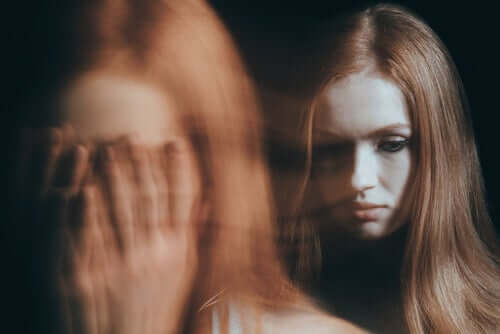Hallucinations are psychological phenomena that because of their uniqueness and relatively low prevalence are of great interest, they occur in different health conditions and they do so with very different manifestations, so now we will address the different types of hallucinations that exist.
The first and most concise definition of this term is attributed to the French psychiatrist Esquirol, who described hallucination as “an objectless perception”, that is, when we suffer a hallucination, we perceive images, sounds, smells, without external stimuli that cause this perception.
- Hallucinations are often mistaken for delusions.
- But in reality their differences are clear.
- In the case of illusion there is an external stimulus.
- But it is mispercepted.
- For example.
- We wake up in the middle of the night and when we look at the bedroom chair full of clothes.
- We think we see a person’s silhouette.
Another big difference is that when illusions go through the filter of reason, they disappear quickly, on the contrary, hallucinations present the same strength and impact as a reality and resist all kinds of rational reflection, that is, the person is firmly convinced that what he or she perceives actually exists.
There are several ways to classify hallucinations: according to their complexity, their cause, the way they appear. . . In this case, we will focus on the types of hallucinations that exist depending on the sensory modality in which they occur.
In visual hallucinations, the individual perceives through vision something that, in fact, is not there, can be simple, like flashes of light, or complex, are much more elaborate and the person can see complete scenes including touching and colorful characters.
They are types of hallucinations that occur in times of transition between wakefulness and sleep, are also characteristic of states of deterioration due to substance use and usually occur during alcohol withdrawal syndrome.
They are the most common and most common in cases of schizophrenia. As in the above case, the person can only listen to elementary sounds or full conversations. Its content is generally threatening or imperative. The individual can hear how he is ordained, accused, or even how several voices speak of him.
They usually appear together and are much less frequent than the previous ones, they are usually unpleasant smells and flavors.
In the case of smell, the person may think that the smell comes from the body (smell of rot) or from the outside (my whole house smelled of urine). On the other hand, taste hallucinations can lead you to believe that you’re poisoned by food.
They are bodily sensations, physical perceptions in one part of the body. The individual may feel an electric current, perceive that he or she is petrified, that his body tears, or that his organs break down.
They involve the feeling of touch: there is the perception of being touched, trapped, burned (passive hallucinations), or of yourself, touching something that does not exist in reality (active).
They imply a misperception of the movement of the body itself. The person may feel levitating or displaced. They are common in patients with Parkinson’s disease and certain types of schizophrenia, as well as in those who use psychoactive substances.
Hallucinations are often associated with psychological disorders. While many mental disorders, such as schizophrenia, bipolar disorder and dementia, are accompanied by this phenomenon, it is not the only cause, however, they can also be caused by the use or elimination of substances, as well as in cases of brain injury. or tumor.
Even healthy people can suffer hallucinations, such as sleep paralysis, migraine auras or those who believe they see or hear from a loved one who died during the grieving process, in any case, if they are frequent or interfere with our well-being, It is necessary to consult a specialist.

